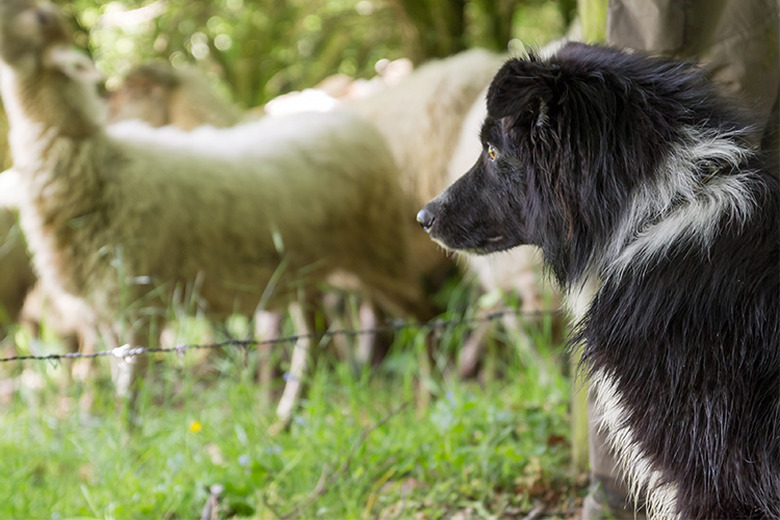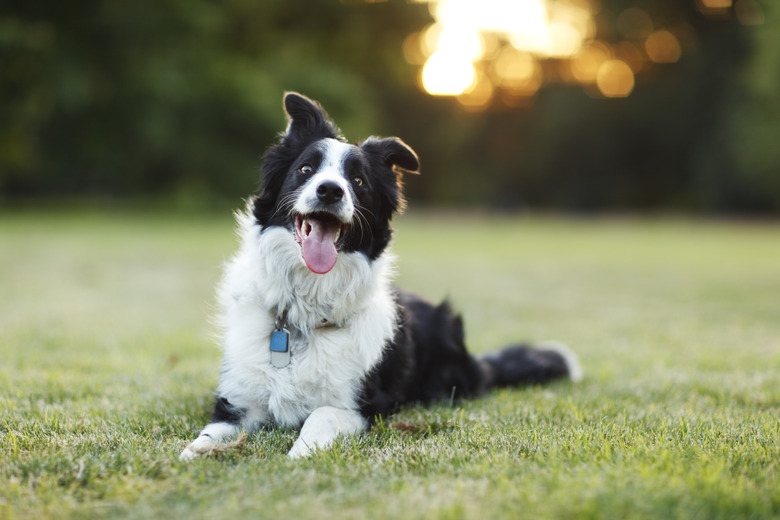Border Collies Vs English Shepherds
When looking at an English shepherd and a border collie, it can be difficult to differentiate the two dogs. Both breeds are medium-size breeds bred to herd livestock. However, there are differences between these active and athletic dogs that make each worthy of consideration for your next pet.
Border collie size and coat
Border collie size and coat
Border collies are recognized by the American Kennel Club and are members of the herding group. The dogs weigh 30 to 55 pounds. Males grow 19 to 22 inches, and females are slightly smaller, growing 18 to 21 inches tall.
There are two accepted coat types for border collies: rough and smooth. Rough-coated border collies have a longer coat with varying lengths accepted. There is feathering on the legs, chest, and underside of the body with a shorter, smoother coat on the face, ears, and front of the legs. Smooth-coated border collies have a shorter coat with a rougher texture. There may be some feathering but much less than what is seen on a rough-coated variety.
If you are looking for merle dog breeds, the border collie is one to consider, as blue, sable, and red merle are all accepted colors under the breed standard. Other accepted colors include black, blue, brindle, sable, and red.
English shepherd size and coat
English shepherd size and coat
English shepherds are not recognized by the American Kennel Club, but they are a recognized breed in the United Kennel Club. English shepherds are generally larger dogs compared to border collies. Male dogs measure 19 to 23 inches tall and weigh 45 to 60 pounds. Female dogs measure 18 to 22 inches tall and weigh 40 to 50 pounds.
English shepherds have a double coat just like border collies but only have one coat type under the breed standard. The coat on the body can be straight or wavy, and the dogs have to feather on the back of the front legs. They have short, smooth fur on the face, skull, and front part of the legs.
Accepted colors typically include black and white, black and tan, sable and white, and tan and white. Tricolor dogs are also accepted under the breed standard. Colors that are not accepted include solid black, solid red, solid white, red or blue merle, and dogs that are more than one-third white.
Best cattle dogs
Best cattle dogs
When looking for the best herding dogs for livestock, both the English shepherd and the border collie are likely in the running. Both breeds are energetic, intelligent, and alert, which are traits that make them excellent at their job.
Border collies, formerly known as Scotch sheep dogs, were bred to herd livestock. The breed originated in Britain and likely started as a mix between the Roman herding dogs and Viking spitzes. The dogs herd with intense focus and eye contact. They crouch low when they need to be stealthy and are fast enough to complete sweeping outruns while working a herd.
English shepherds also originated in England and were brought to the United States, where they became excellent all-around herding dogs capable of working sheep, cattle, or even poultry. Unlike border collies, English shepherds do not use a fixed and intense stare when herding and instead have a loose-eyed herding style. They tend to remain more upright while herding and have a much more relaxed manner compared to the border collie.
Considerations when selecting a dog
Considerations when selecting a dog
Both the English shepherd and the border collie are intelligent and active dogs. Before bringing them into your family, make sure you have the space and time to accommodate their active nature. Be prepared to offer plenty of daily exercise and mental stimulation. Consider participating in a sport to keep them engaged. Herding dogs are not always the best choice for families with other small pets or small children, so take this into account before bringing the pup home.
Both breeds tend to be healthy, but there are some hereditary issues for which responsible breeders should test. Some health conditions to which border collies are prone include hip dysplasia, progressive renal atrophy, collie eye anomaly, and deafness.
English shepherds have their own health concerns. They are also prone to hip dysplasia as well as other conditions, including hereditary eye problems and the MDR1 gene mutation, which can increase the likelihood of adverse reactions to drugs.


